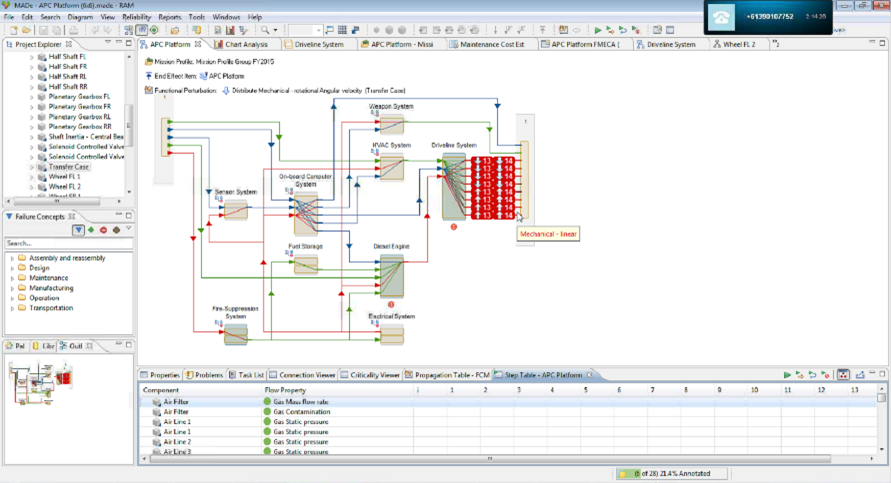Introducing Teamcenter 12: Adaptable, enterprise product lifecycle management (PLM)

Enterprise product lifecycle management that’s easier to use, more cost-effective to manage, and CM2 4-star certified
Announcing Teamcenter 12, and for related news, read press releases on our new partnership with Obeo to enhance our Model Based Systems Engineering solutions, and updated certification of Teamcenter on Amazon Web Services.
For release highlights, let’s hear from Rohit Tangri, Vice President of Teamcenter Product Management, Marketing, and Business Development for Siemens PLM Software.
Today I am pleased to introduce Teamcenter 12, which delivers enterprise product lifecycle management (PLM) technology and solutions to help you reach greater returns on your investment. Teamcenter 12 can help you reduce the overall cost to manage and maintain PLM through cloud-based deployment options, along with easier tools to manage and maintain Teamcenter.
I’m also pleased to announce that Teamcenter 12 / Active Workspace 4 (and Teamcenter 11.5) have received CM2 4-star certification. For our customers in highly regulated industries like aerospace and defense, automotive, and medical devices, CM2 4-star certification assures that Teamcenter meets the PLM requirements. With Teamcenter, you can deliver products that meet clear, concise, and valid CM2 requirements. CM2 helps your business more effectively manage change to get out of the vicious cycle of corrective action, so instead, you can focus on innovation and new product development.
Reach greater levels of efficiency … on-premises or on the cloud
With Teamcenter 12 and Active Workspace 4, more users across your business can take advantage of convenient web browser access, on any smart device, or access Teamcenter from MCAD or Microsoft Office. New and enhanced solutions extend the technical depth and business-solution breadth of the Teamcenter PLM portfolio … including new Program Planning and Product Configurator solutions. As you review the portfolio updates, you will see more widespread functionality is available through the Active Workspace user interface.
Teamcenter on the cloud with your choice of providers
Teamcenter 12 gives customers more options to manage the cost of PLM ownership by partnering with a diverse cloud partner base, including Microsoft Azure and Amazon Web Services, and leveraging the cloud expertise of Siemens global managed services organization and channel partners.
Providing you with more delivery options for cloud PDM to PLM can help you reduce your overall cost to manage and maintain Teamcenter, especially when you can choose the cloud partner to align with your IT strategy and direction. You can get started quickly and cost-effectively with Teamcenter or transition your on-premises deployment to the cloud. (Read about customer deployments of PLM on AWS cloud.)
Deployment Center to manage and maintain multiple environments
 Teamcenter can help you manage and maintain Teamcenter more efficiently with the Deployment Center, a web-based installer that helps you more easily manage Teamcenter across an unlimited number of environments – across departments and locations. Deployment Center provides total PLM administrative system automation, visibility, and control.
Teamcenter can help you manage and maintain Teamcenter more efficiently with the Deployment Center, a web-based installer that helps you more easily manage Teamcenter across an unlimited number of environments – across departments and locations. Deployment Center provides total PLM administrative system automation, visibility, and control.
Teamcenter 12 offers full platform support — including the Active Workspace user interface, foundation applications, and customizations — to make it easier to set up a Teamcenter environment.
Reach more users, beyond functional silos, with intuitive web user experience
As we go forward, Active Workspace is the preferred user interface for Teamcenter because it combines web accessibility with ease-of-use. You will see our R&D investment in Active Workspace reflected across the portfolio, with new and enhanced solutions optimized for easy, intuitive user experience.
For example Design Data Exchange in Active Workspace supports intuitive collaboration with suppliers outside of Teamcenter:

New features in Teamcenter 12 make it even easier for you to tailor the Active Workspace user interface to specific business needs or processes. From any web browser on a smart device, or using MCAD or Microsoft Office as the user interface, people across the business, anywhere in the world can access the product information and processes they need to make the right decisions.
Faster, more cost-effective client-side visualization
Visualization is essential to cross-company collaboration because it allows people to view and interrogate product designs with the industry standard 3D JT format. With Teamcenter 12, Active Workspace users have the added option of rendering product structures on their client devices, along with access to a host of Active Workspace visualization features. This release also provides support for Ultra Lightweight Precision (ULP), which enables faster network transmission and lower memory usage for users of classic desktop installations of Teamcenter Visualization.
By adding the option of client-side graphics processing for Active Workspace users, and providing support for ultra-lightweight model visualization for Teamcenter Visualization users, Teamcenter 12 improves the performance of collaboration between MCAD and non-MCAD users — at a lower cost of ownership — by taking advantage of existing hardware investments.
Ultra-fast multi-site collaboration
Teamcenter 12 also improves multi-site collaboration across globally-distributed environments, so users can quickly access all types of product information. Ultra-fast, multi-site collaboration speeds up the transfer and import of large amounts of product data with high throughput during replication and synchronization, with high reliability. Patented new technology delivers up to 10 times faster data transfers, 5-10 times faster data synchronization, and increased throughout up to 2 million objects per hour!
Reach across business processes with unmatched solution breadth in enterprise product lifecycle management
Improved ease of use for Program Planning
Teamcenter 12 enhances the user experience of the new Teamcenter Program Planning solution, which provides visibility across projects, across domains, and across the lifecycle. Teamcenter supports both a top-down approach to program planning, determining what should be executed, with a bottom-up approach that validates what can be executed. With Program Planning inside of PLM, customers can confidently plan against accurate requirements and goals. Status is always in sync with what’s actually being executed, and customers can see what’s happening in real time dashboard views.

More efficient process, change, and schedule management
With Teamcenter 12, processes for change management and schedule management are also easier and more efficient using Active Workspace. Automated change tracking enables you to set a change context (engineering change notification) for an application’s authoring session and the edits made to the object will be recorded against that ECN. Multiple users in authoring solutions can relate the edits to the ECN simultaneously. In Schedule Manager, Teamcenter 12 enables the definition and assignment of a set of users having a common skillset (i.e., CAD designers with expertise in NX).
Bill of Material (BOM) management with enhanced tree structures and new smart discovery

Teamcenter BOM Management continues to improve usability with enhanced tree structures for navigation. New smart discovery capabilities enable teams and individuals to find the information they need and work with it in a way most meaningful to them. Users can quickly search and filter across massive amounts of data to find only what is required to fulfill a particular task. BOMs and other information can be viewed in a way that’s easily understood. People have the flexibility to work in the context of their products – in pre-defined BOM views specific to your domain, by defining context on the fly, or through access to their own personal role-based workspaces.

Product Configurator to understand and leverage common features across variants
Across the product development business, a key element of managing complexity and maximizing re-use is understanding and leveraging common features across product variants and configurations (i.e., one vehicle platform supports multiple product lines of cars). Updates to Product Configurator in Teamcenter 12 improve the efficiency of the product configuration analysis process by evaluating constraints and removing content that is not relevant for that range of configurations. From Active Workspace, users can see product content resulting from the overlay of multiple configuration variants, as well as edit and apply configuration rules used to ensure the result is a valid, buildable product.

IMDS integration for more efficient supplier declaration processing
Teamcenter 12 introduces substance compliance enhancements to the International Material Data System (IMDS) integration, including the ability to request a declaration from IMDS from within Active Workspace, and the ability for customers to add custom validation logic before importing a material declaration from IMDS, for more efficient supplier declaration processing.
Systems modeling and diagramming in Active Workspace
Siemens PLM Software’s approach to Systems Driven Product Development (SDPD) brings together multiple design domains – mechanical, electrical, and software — along with considerations like cost, reliability, and manufacturability. The process starts by specifying requirements, establishing program plans, moving through the product architecting process, defining interfaces, setting targets/attributes, identifying technical risk, and establishing/capturing system decision models. SDPD drives the entire downstream development/delivery process for continuous engineering throughout the entire cross-product lifecycle. Because Teamcenter understands how everything fits together, domain-specific decisions are always made with the big picture in mind.
Teamcenter 12 provides new system modeling and diagramming in Active Workspace that makes it easier to see cross-domain data, relationships, and dependencies with easy one-click access – whether it’s requirements, MCAD designs, ECAD designs, software, analysis, etc. Teamcenter can manage large-scale verification and validation using advanced simulation techniques, as well as plan and execute across ALM-PLM domains, which includes hardware and software bill of material (BOM) management.

New safety and reliability solutions for Teamcenter
The new Teamcenter Maintenance Aware Design (MADe) product line introduces an integrated, model-based product safety and reliability approach that adds reliability modeling to the product lifecycle to predict reliability issues before they become product recalls. This allows organizations to move from isolated product safety and reliability analysis processes (i.e. isolated RAMS, disconnected FMEA, Fault Tree’s, etc.) to integrated reliability models that can proactively influence product development towards safe and reliable products.
— System Reliability Modeling allows customers to model expected product behavior and evaluate the impact of potential failures/risks associated with the Teamcenter product configuration—producing standard failure management artifacts such as FMEA, reliability diagrams.
— Reliability, Availability, Maintainability & Safety (RAMS) analysis uses the models to assess when failures are expected to occur, how to mitigate the risks and calculate the impact on system cost, safety, and availability.
— Condition-Based Maintenance preventative/prognostics advise sensor designers for diagnostic coverage to ensure preventative fault detection; providing a proactive means of creating fault-robust products that are immune to failures.

As you grow your enterprise product lifecycle management deployment, Teamcenter 12 and Active Workspace 4 deliver enhanced applications throughout the portfolio to help you improve your products … and your business. To catch up on highlights of earlier releases, read my blogs on 11.4, 11.3, 11.2.3, 11.2.2, 10.1.7, 10.1.6, and 10.1.5!


